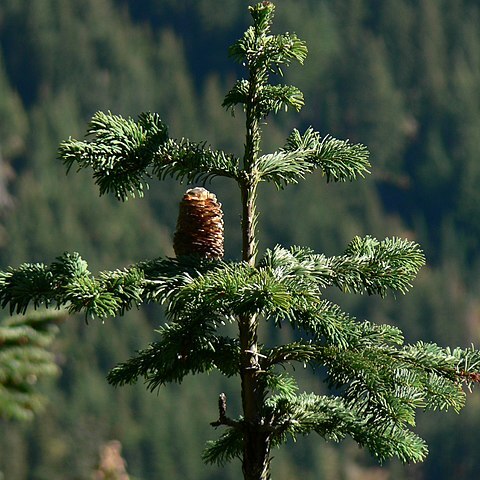An evergreen tree. It grows 80 m high. It spreads 8 m across. The bark is smooth and grey. The crown is cone shaped. The leaves are needle like. They are flattened and crowded onto the upper surface of the branches. The cones are dark purplish-brown.

